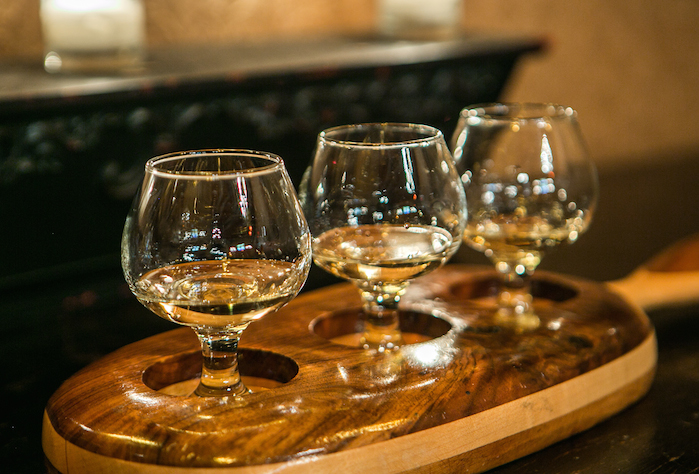Editor’s Note: In an effort to keep readers up to date about on-premise trends, which often predict the next retail trends, we occasionally cross post pertinent content from our sister publication, Cheers.
Sophisticated tequila programs are no longer just for Mexican-themed restaurants. More customers now expect to see a representative selection of tequilas on the backbar of every type of venue these days.
And they’re looking for more than just the familiar tequila brands. Savvy spirits cognoscenti want to explore the expressions and flavors—of the entire agave family.
Tequila is the focus at The Matador, a Seattle-based, 14-unit upscale casual-dining concept. “We have become a destination for tequila aficionados in the Northwest and the states we’ve moved into,” says Brian Livesay, an agave expert and the bar manager at the chain’s Boise, ID, location.
Each of the restaurants stock 120 to 150 different tequilas, based on availability and unit demographics. “Over the past few years, we’ve been moving into mezcal,” adds Livesay, “and have been working to educate our guests about that trendy spirit.”
That’s become a key part of the on-premise experience. “Fine spirits always taste better when you know more about what you are drinking,” says Tommy Tardie, owner/operator of the New York-based Goodnight Group.
Tardie has added educational tequila samplers to the list at his whiskey-centric concept, The Flatiron Room. And the recently opened Fine & Rare restaurant offers an Agave Explorer tasting option in addition to tequila flights.
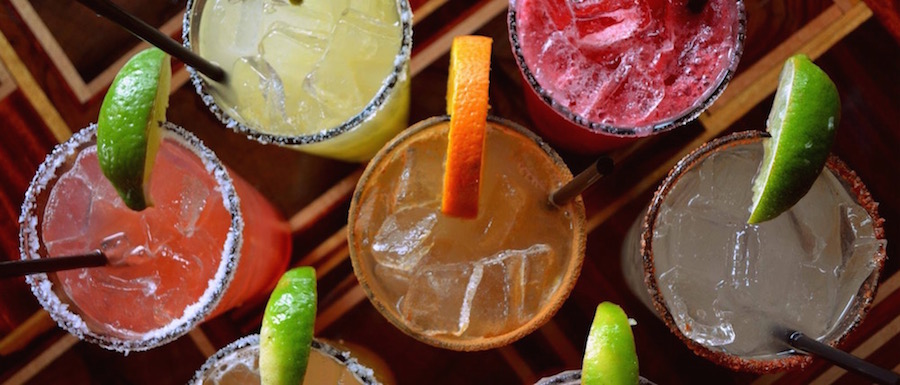
Succulent Growth
“Tequila had a great year,” says David Ozgo, senior vice president for Economic and Strategic Analysis for the Distilled Spirits Council of the U.S. (DISCUS). The blue agave spirit was the second-fastest growing category after Irish whiskey in 2016. Tequila volume grew 7.1% to 15.9 million cases; supplier revenue was up 7.5% to $2.5 billion.
Most of that growth came from top-shelf labels: The high-end premium segment’s revenue grew 14.9% and superpremium rose 7.2%. For example, that high-end includes El Jimador, Cazadores and Sauza Hornitos, according to DISCUS, while superpremium brands encompass Patron, Herradura, Don Julio, Sauza Tres Generaciones and Avion—among others.
“We’ve seen a boom in brands available, both established products and newly conceived brands,” notes Isaiah Estell, bar director/sommelier at Cavan Restaurant & Bar in New Orleans. Cavan, which explores regional cuisines along the Eastern Seaboard and the Gulf of Mexico, carries 10 tequilas and 10 mezcals; prices range from $7 to $25 for a 2-oz. pour.
Estell and his guests are currently excited about the ArteNOM series of tequilas and the Vago mezcal range, and are discovering new entrants all the time. “Since we opened a year ago, the tequila selection has grown a bit, but the mezcal list has doubled,” says Estell.
With more than 25 selections of tequila and mezcal, Livery is “all about tequila,” says beverage manager Lee Ellerbrook. The casual dining restaurant is part of the Indianapolis-based Cunningham Restaurant Group, which operates 20 locations in three states.
Tequila prices range $8 to $60 for a pour size of about 2-oz., with Don Julio Real at the high end. Livery also offers a few examples of sotol and bacanora. “We are working on becoming agave aficionados,” says Ellerbrook.
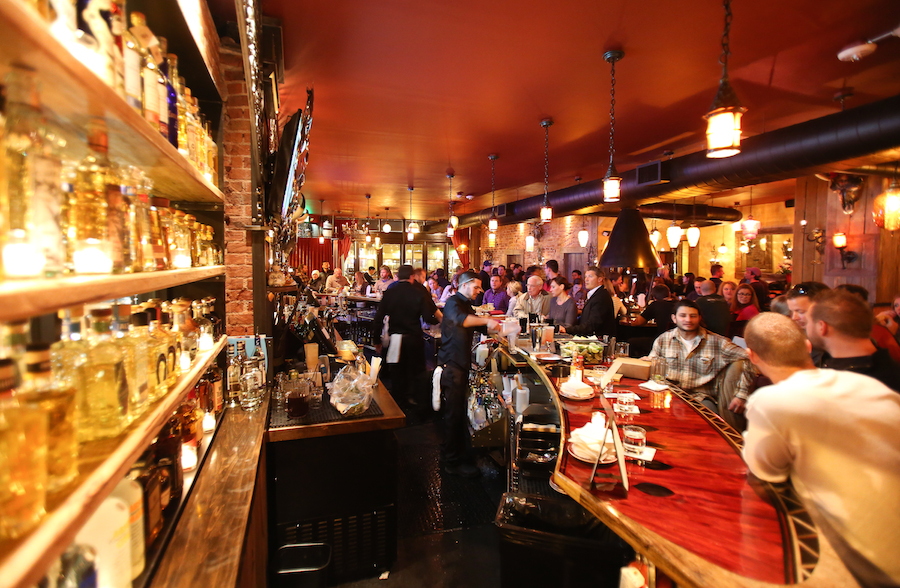
Evaluating Selections
With wider availability and the plethora of marcas tequilianas and other agave-based spirits on the market, operators are finding that it’s critical to select brands that fit their philosophies and clienteles. Spirits geeks are always looking for the new and novel, and they are increasingly concerned about sustainability and fair trade.
“People who really know tequila recognize that we carry products that meet a higher standard in sustainability and traditional production,” says David Shenaut, director of operations at Raven & Rose, a gastropub in Portland, OR. The restaurant carries 12 bottles in the agave category, priced $7 to $30 for a 1½-oz. pour, but none of the major brands. It also offers a few off-list rare bottlings.
For customers who call for the well-known premium brands, Shenaut and his staff are ready with alternative suggestions. Because it is housed in an historic carriage house, the British-themed Raven & Rose also trades on the historic drinking cultures in 1800s Portland, when what was then known as “Mexican brandy” had a place behind the bar, notes Shenaut. “I would love for us to focus on agave spirits more.”
Estero is another bar that doesn’t carry any of the heavily marketed tequila call brands, says general manager Michael Rubel. The Latin-American- and Caribbean-themed bar, part of the Chicago-based Heisler Hospitality restaurant group, offers about 20 tequilas, 40 mezcals and a few agave cousins such as sotol, bacanora and raicilla. “So customers are forced to branch out and almost always appreciate the flavor they get from smaller brands with more ethical production methods,” says Rubel.
“There are many really good tequilas on the market,” says Livesay at The Matador. “But there are also some overpriced tequilas, where you are paying for the fancy bottle and a multi-million dollar advertising campaign.” The chain offers 1 ½-oz. pours for $7 all the way up to $300. The sweet spot that offers the biggest bang for the buck is the $10 to $30 price range, says the bar manager.

Smokin’ Hot Mezcal
Tequila’s smoky cousin is showing up on more backbars these days. An analogy can be drawn between rye’s rise on the coattails of bourbon’s popularity.
“A lot of people start with tequila and then move into mezcal, which has a more aggressive and interesting flavor profile,” says Livesay. The Matador restaurants offer a dozen or more mezcals as well as a few sotols.
“People seem more interested in mezcal than tequila, [and are] asking more questions about it,” says Noor Shikari, co-owner with husband Luis Davila of Citrico, a southern Mexican restaurant in Brooklyn. Citrico currently offers three mezcals: one made with espadin agave, another with barril agave and a pechuga (mezcal distilled with turkey or chicken breast, or fruit and nuts). Shikari plans to add more mezcals to her list, especially the pechuga varieties.
Back in 2009, agave aficionados in Oregon had access to just two brands of mezcal, recalls Shenaut, who helped rally a “March for Mezcal” in 2010 to persuade the state liquor board to remedy that. “Today, the landscape in Portland has really changed—nearly every bar in town has at least some mezcal on offer,” he notes. “And we have several specialist bars and restaurants with truly impressive agave-based offerings that are busting at the seams with tequila and mezcal bottles of all shapes and sizes.”
Mezcal is a new addition to bars in Boise, “so at my little bar, I went from zero to two or three,” says Kevin Hopper, bar manager at the Capitol Bar in Boise, ID. Besides the mezcals, the bar carries five brands of tequila, priced $5 to $10.
“I have to have Patron because customers call for it,” he notes, “but I also like tequila the El Espolon and Lunazul brands.” Right now though, Hopper is jazzed about mezcal and writes on that topic regularly in his blog; customers will read that and come in asking to try mezcal, he says. “But I’m just beginning my mission here.”
In Mexico, mezcal is usually served in copitas, shallow, saucer-like vessels made out of clay. A number of operators in the U.S. have adopted the tradition, including Cavan and Citrico. “It’s the traditional way to serve mezcal, and the copitas really bring out the bouquet and add an earthy note,” Shikari says.
Shenaut at the Raven & Rose believes that agave spirits are best when sipped. To that end, “I want to add copitas to our service.” These will be ½-oz. pours, priced at $7 each and served with orange slices and spices. “It has been something that I have wanted to do since my trip to Oaxaca,” he says.
Estereo honors the Mexican tradition of serving a side of sangrita with agave spirits. The house sangrita has a base of tamarindo agua fresca with fresh orange and lime juices, spiked with ground dried guajillo and arbol chiles. It’s served with every neat pour of mezcal or tequila, says Rubel. Estereo has three sotols and three raicillas on the menu.
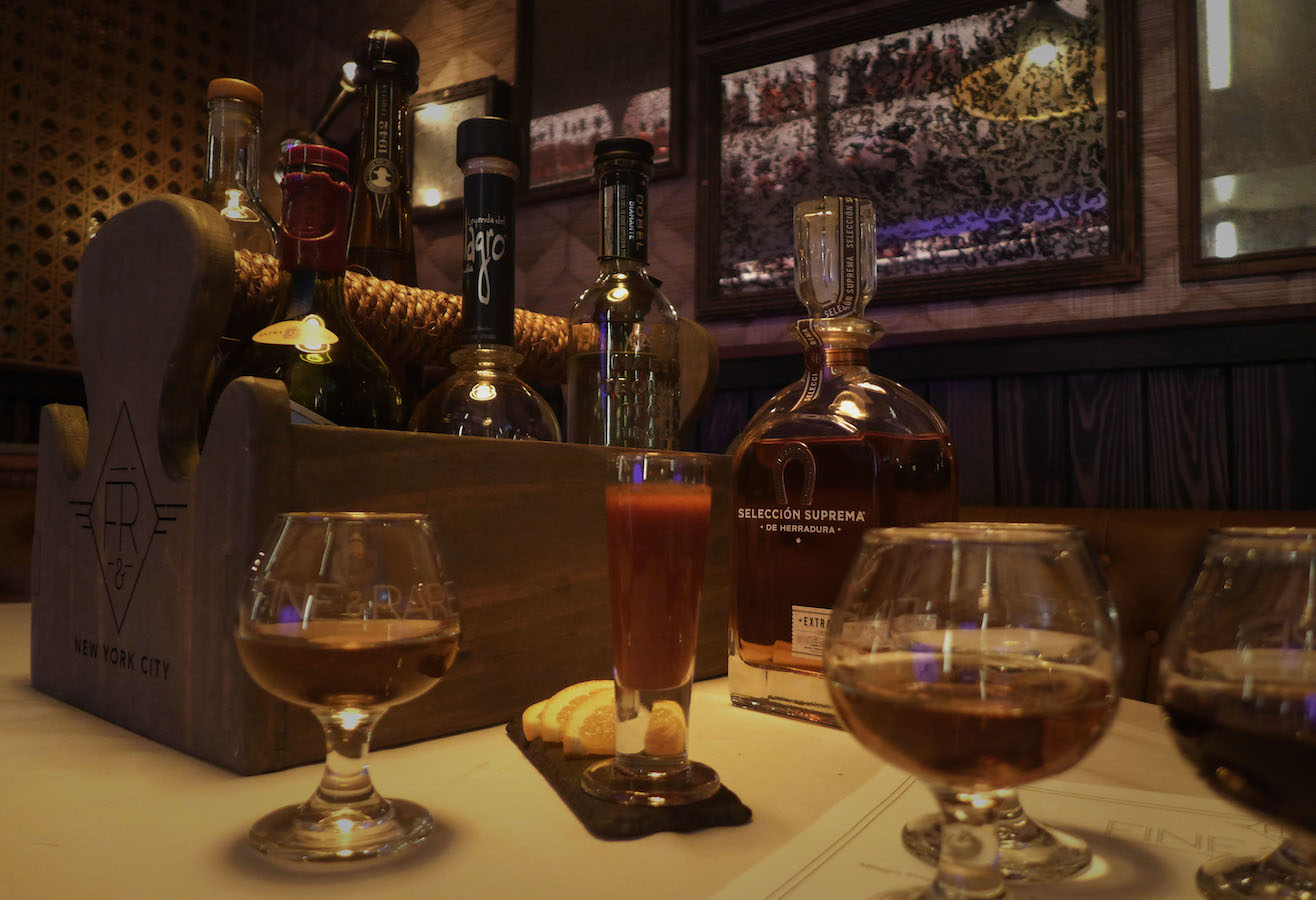
On Board With Flights
When guests ask where to start in exploring agave, Tardie at Goodnight Group recommends a flight option. Discovery flights, showing off a range of styles, from highland to lowland, are the most popular.
When a guest orders a flight, a staffer brings to the table a wooden, six-bottle caddy that Tardie crafted himself. Tasting mats identifying the spirits are set in front of participants, and the staffer comments on the products as they pour. “When those bottle caddies come out, cell phones go up and flashes go off,” says Tardie, creating a lot of me-too sales.
“Flights are fun, and an educational tool,” says Livesay. The Matador offers at least five variations that demonstrate the differences between the expressions—blancos, reposados, anejos and extra anejos. Other flights may showcase three expressions from a single distillery. Flights are served in snifters, set on wooden paddleboards, hand-crafted by Matador founder Zak Melang.
At Citrico, Shikari serves a flight of three mezcals in clay copitas accompanied by orange or grapefruit slices and Himalayan salt. Often guests who try flights will then order a glass of their favorite. The mezcal flight is also a popular after-dinner option.
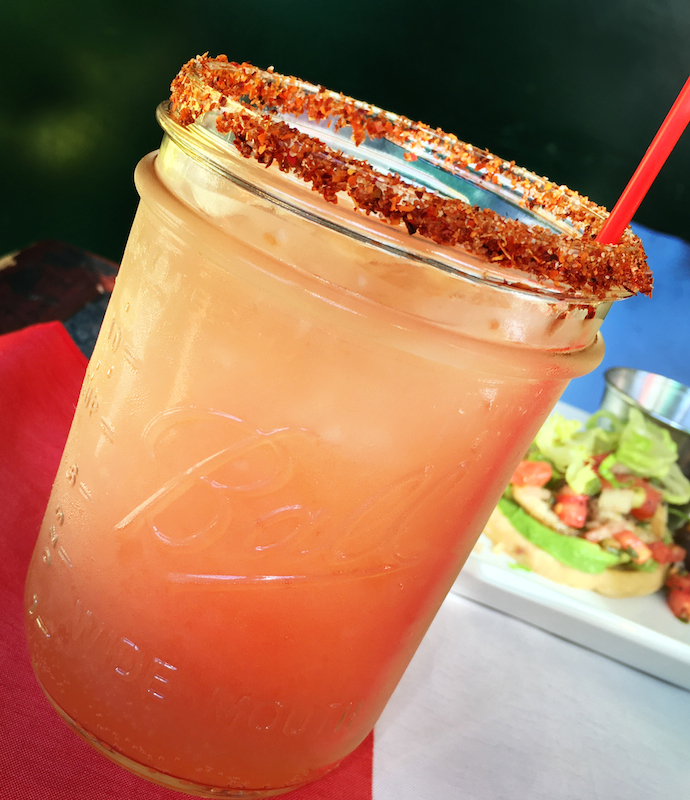
Cocktail Connection
Mixed drinks—from the hugely popular Margarita to classics such as the Paloma—are the best vehicle to interest guests in new expressions of agave spirits. Bartenders often add a small proportion of mezcal to a tequila cocktail to provide just a touch of smokiness.
“People are willing to try agave versions of the more popular traditional drinks,” says Ellerbrook. For instance, a bartender might substitute a smoky mezcal for bourbon in a Manhattan or Old Fashioned.
One of the Livery’s most interesting cocktails, he notes is the Soledad Fire. Priced at $11, it muddles jalapenos with Del Maguey Vida mezcal, pineapple juice, ginger juice, lime and coconut, served in a mesquite-salt rimmed glass.
At Capitol Bar, Hopper eases his customers into mezcal with cocktails such as the Mezaloma, which is a Paloma with the addition of ½-oz. of mezcal.
To sweeten the exploration, the drink includes Chef Ryan Hembree’s habanero honey. “It’s a totally different version of the classic with just a touch of smoke,” he says.
Hopper’s spicy signature Margarita muddles Serrano chiles and cilantro for a colorful green and red tequila cocktail with a New Mexico red chile salt rim.
“Nothing beats the sales of Margaritas,” says Shikari at Citrico. One version uses barril mezcal, which is gaining popularity. The short Tragos list ($11 to $12) includes the Tlaxcalita Bella, made with tequila, cranberry juice, lime and fresh mint; and the Guavazcal, mixing guava and lime juices with pechuga de maguey mezcal topped with ginger beer.
“We sell a huge amount of Margaritas,” says Livesay. Matador’s core menu offers seven Margaritas, priced $8 to $10.50. All are made with 100% blue agave tequila and fresh juices.
There’s also a Paloma made with mezcal. “We are working on mezcal cocktails, but a lot of people are still unsure about it,” Livesay says.
“We keep our mezcal cocktails very simple and focused to show respect for the spirit and the amazing mezcaleros who create it,” says Rubel. Cocktails at Estereo are $12; one example now is a drink made with Vida mezcal, Cruz de Fuego Mezcal Espadín, agua de Jamaica, lime juice and house-made piña bitters. Those ingredients are force-carbonated and served on draft.
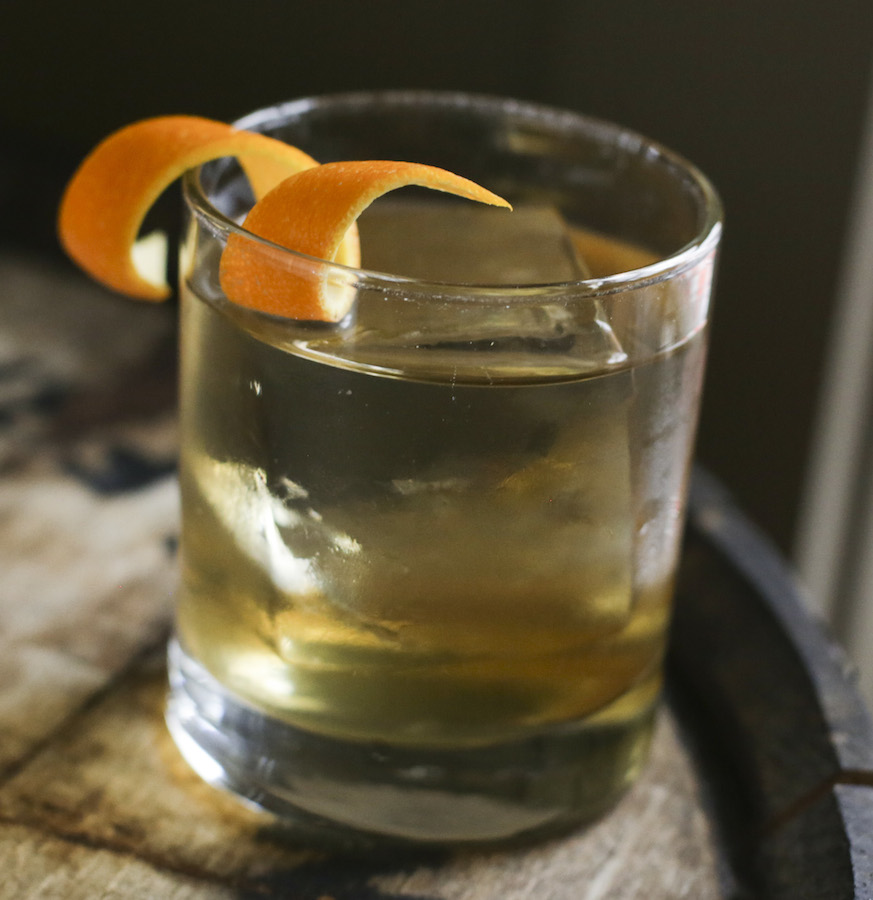
Spicing Up Classic Cocktails
Playing upon the Raven & Rose historic setting in the Ladd Carriage House, the drinks lists speak to nerdy West Coast cocktail history, says Shenaut, “because of course you would have had barrel-aged ‘Mexican Brandy’ in your fancy cocktail in Portland in 1883.”
Among the half dozen tequila cocktails featured are Caroline’s Fancy ($14), made with San Matias Single Barrel tequila, dry Curaçao, demerara, cardamom bitters and orange peel; and Cloud Cap ($12), a mix of Fortaleza reposado tequila, Nardini amaro, Clear Creek cherry brandy, a whole farm egg and grated nutmeg.
Mezcal variations include the Full Bloody Irish ($12), made with a local pepper vodka, Vida mezcal, Bloody Mary mix, fresh horseradish and pickles with an Irish stout float.
For Valentine’s Day, Citrico offered a “water with chocolate” drink spiked with tequila; the mezcal version was a salted chocolate drink. The restaurant celebrated its third anniversary in March with a chef’s tasting menu paired with mezcals.
Cavan focuses on variations of classic cocktails, with a proper Paloma that is made with Cimarrom Blanco tequila, Squirt soda, lime juice and salt ($9). Also on the menu are the All Points Up, made with house-infused, Fresno-pepper tequila, French apricot liqueur and lime juice; and the Wilde #9, made with Peloton de Muerte mezcal, Aperol, Punt e Mes and cocoa tea bitters. The latter is a Negroni-style cocktail, notes Estell.
The bar director is on the lookout to add sotol, bacanora and raicilla to Cavan’s backbar. “We will continue to build our agave collection,” says Estell, “especially at the artisanal end of the range.”
Thomas Henry Strenk is Brooklyn-based writer specializing in all things drinkable.

